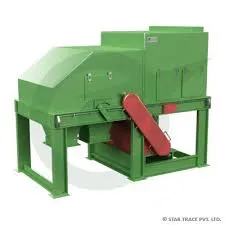
10 月 . 10, 2024 10:55 Back to list
Understanding Aluminium Eddy Current and Its Applications
Eddy currents are looped electrical currents that are induced in conductors due to changing magnetic fields. These currents flow in closed loops within the conductor and can produce significant effects. When it comes to aluminium, a widely used metal due to its lightweight and corrosion-resistant properties, understanding eddy currents is crucial for several applications in various fields, including material processing, recycling, and non-destructive testing.
Principles of Eddy Currents
Eddy currents are generated as a result of Faraday's law of electromagnetic induction, which states that a changing magnetic field within a closed loop induces an electromotive force (EMF) in the conductor. This principle is particularly relevant for non-ferrous metals like aluminium, which can experience eddy currents without the ferromagnetic properties exhibited by materials such as iron.
When an alternating magnetic field is applied to an aluminium workpiece, the changing magnetic field induces circulating currents (eddies) within the metal. These eddy currents generate their own magnetic fields that oppose the original magnetic field, a phenomenon known as Lenz's law. The intensity of these currents is influenced by the conductivity of the material, the frequency of the magnetic field, and the thickness of the conductor.
Applications of Eddy Currents in Aluminium

1. Induction Heating Eddy currents are utilized for induction heating processes where aluminium components need to be heated. This method is energy-efficient and allows precise control over the heating process, making it suitable for applications such as welding, casting, and hardening. In the manufacturing industry, induction heating is used to prepare aluminium for further processing without overheating the surrounding areas.
2. Non-Destructive Testing (NDT) In the aerospace and automotive industries, where aluminium is extensively used, the integrity of components is crucial. Eddy current testing is a non-destructive testing method that provides insights into the structural integrity of aluminium parts. By analyzing the response of eddy currents to surface and subsurface defects, engineers can identify cracks, corrosion, and other issues without damaging the material.
3. Recycling of Aluminium The recycling of aluminium scrap also benefits from the principles of eddy currents. Eddy current separation is a technology that utilizes magnetic fields to sort aluminium from other materials in the recycling process. When aluminium scrap is exposed to a rapidly changing magnetic field, the induced eddy currents create repulsive forces that effectively separate aluminium from non-conductive materials like plastics and glass.
4. Energy Generation In the renewable energy sector, eddy currents play a role in the design of certain types of generators and transformers. The efficient use of aluminium in these applications can lead to lighter and more efficient systems, enhancing energy generation capabilities.
Conclusion
Aluminium eddy currents are an integral part of many modern technologies and processes. Their ability to generate heat and their applications in detection and separation underline the versatility of aluminium as a material. As industries continue to innovate, the understanding and utilization of eddy currents are expected to evolve, opening up new possibilities for applications in manufacturing, recycling, and energy production. Whether in the quest for efficient production methods or in the pursuit of sustainable practices, the role of aluminium and eddy current technology will undoubtedly remain significant.
Latest news
Unveiling the Power of Eddy Current Separator
NewsSep.25,2024
Transform Your Home Recyclin:home metal shredder
NewsSep.25,2024
The Future of Waste Management with Recycling Line Picker
NewsSep.25,2024
The Benefits of a Metal Recycling Plant
NewsSep.25,2024
Revolutionize Material Separation with Onwang Technology
NewsSep.25,2024
Innovative Waste Management: Unveiling the MSW Sorting Plant
NewsSep.25,2024